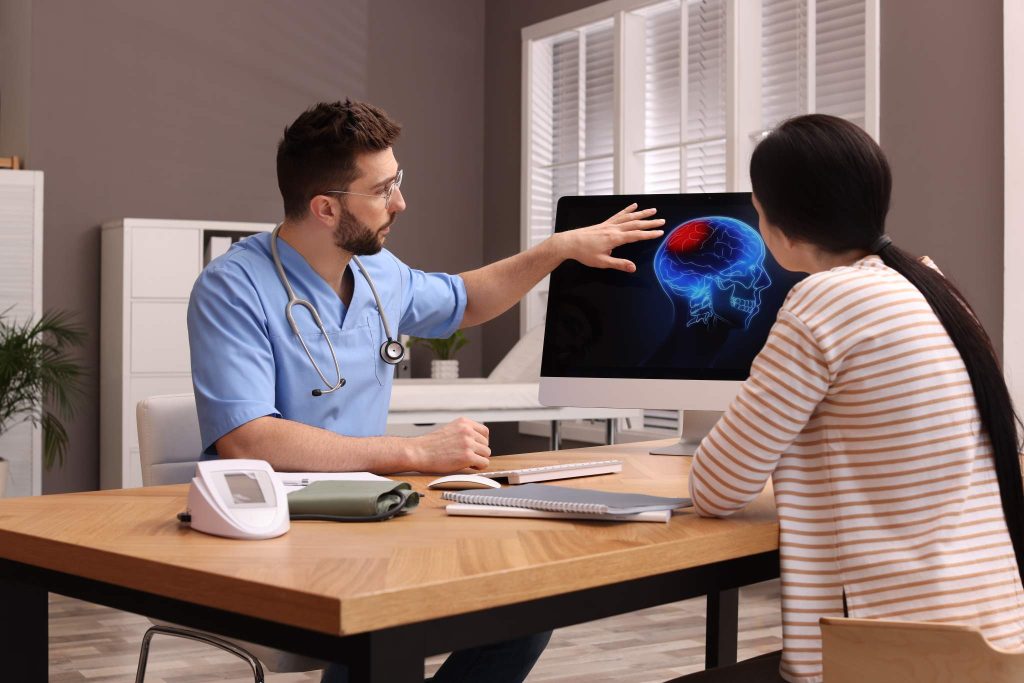If you suffer from chronic back pain, it is usually a result of disc-related problems and injuries, and this will likely be the first thing a neurosurgeon explores during a consultation. You may even go down the path of injections, pain killers, and physical therapy to address disc degeneration or herniation, only to find no relief. This is because lower back pain often stems from the bones, or vertebrae, rather than the discs, making the pain vertebrogenic. This type of pain is only starting to be understood recently by a select group of doctors. When suffering from lower back pain, the next time you google “neurosurgeon near me,” be sure to look for someone who understands vertebrogenic back pain.
How Vertebrae Cause Back Pain
The spine is a column that is made up of vertebrae and discs stacked atop one another in an alternating pattern. Between each vertebra and disc is an additional thin layer of cartilage known as the vertebral endplate. While the vertebral endplate is small, only about 0.1 to 2 millimeters thick, it is packed with nerves. Because they are so nerve-dense, even more so than discs, the endplates are extremely susceptible to pain.
When the endplate and the nerves are compressed, it can cause a great deal of pain, known as vertebral endplate dysfunction. This usually occurs as a result of wear and tear over time, causing symptoms as we age.
These symptoms are often mistaken for degenerative disc disease because of the proximity of the disc and the endplate. If a neurosurgeon isn’t trained in vertebral endplate nerve dysfunction, it can be easy to miss the signs and misdiagnose the cause of chronic lower back pain.
Diagnosing Vertebrogenic Back Pain
The best way to identify whether the discs or the vertebrae are causing pain is through an MRI. If the cause is vertebral endplate nerve dysfunction, the MRI will display something called a Modic change. Modic changes can indicate this dysfunction in two ways: either the bone marrow becomes inflamed and swells, or the bone marrow turns to fatty tissue as a result of reduced blood flow.
If either Modic change is present and accompanied by chronic lower back pain lasting at least 12 weeks, it is then considered to be vertebral endplate nerve dysfunction.
Because not all radiologists know to look for Modic changes, patients will not always receive this diagnosis immediately. You may need to either advocate for yourself during scans or find a neurosurgeon who is familiar with vertebral endplate nerve dysfunction.
Treating Vertebrogenic Back Pain
The good news is that if you are diagnosed with vertebral endplate nerve dysfunction, there is an effective treatment option in nerve ablation. This minimally invasive procedure is able to address this pain.
You may be a candidate for nerve ablation if you meet the following criteria:
- Chronic lower back pain lasting at least six months
- Conservative therapy has not addressed the pain
- Evidence on an MRI of Modic changes correlating to your symptoms
The procedure is performed using fluoroscopy, or real-time x-ray, as a doctor inserts a thin tube called a cannula into a vertebral pedicle. The pedicle is a stem-life structure protruding from the back of the vertebrae; each vertebra has 2 pedicles. The cannula then creates a tunnel into the basivertebral nerve, allowing a radiofrequency probe to be placed.
This probe ablates the nerve with the help of a radiofrequency generator. This destroys the nerve in the vertebral endplate that is transmitting pain signals to the brain, ending the pain.
Because this is a minimally invasive procedure, it can be done on an outpatient basis, with patients able to go home the same day, even within a few hours. The devices used do not stay in your spine once the procedure has ended, though you will feel immediate results. However, the results are not permanent, so your doctor will set expectations around how long the relief may last. Studies have shown benefits can last as long as two years.
Addressing Chronic Lower Back Pain
If you suffer from lower back pain and find conservative therapies have not worked, it is possible you are addressing the wrong root cause of your pain. Working with a doctor like those at AICA will allow you to explore whether vertebral endplate nerve dysfunction could be a contributing factor to your condition and if nerve ablation may be for you. Call us today to schedule an appointment with a neurosurgeon who can help!





